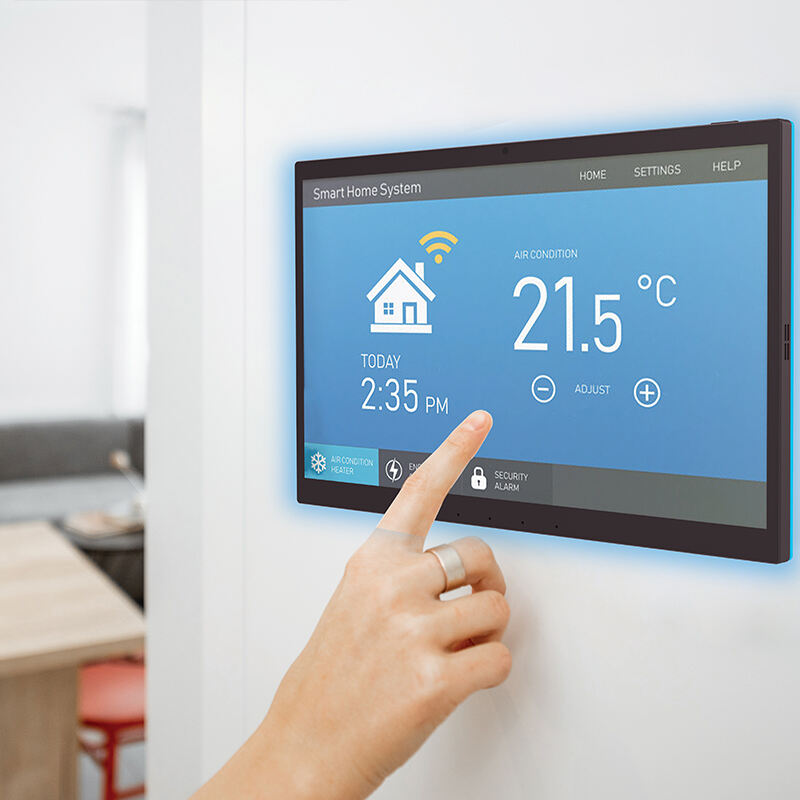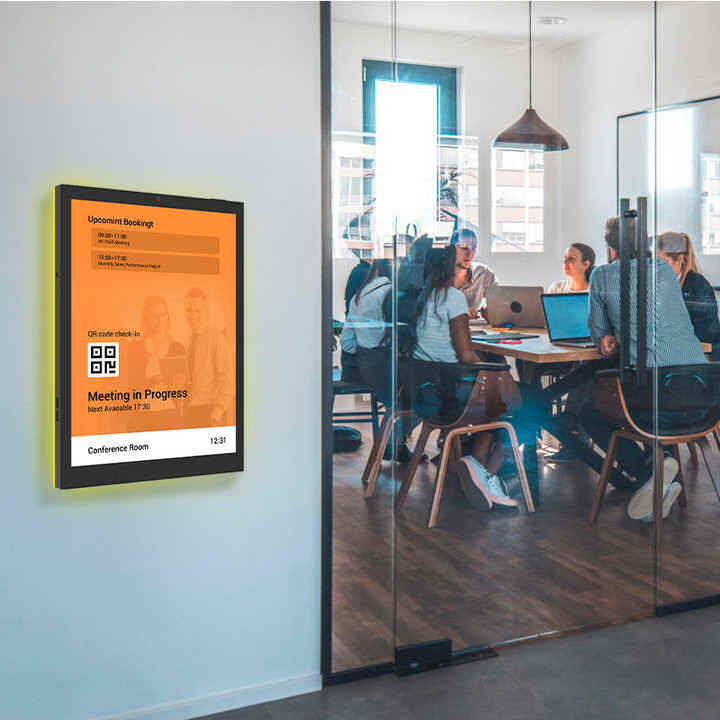Smart Home Tablets: Your All - in - One Home Control Center

Why Smart Home Tablets Are Essential Control Centers
Centralized Management of Connected Devices
Tablets for smart homes The role of tablets in our smart homes it isn’t anything new, they serve as the centralized control point for all home devices and other things within a smart home. These tablets simplify the task of managing lights and thermostats, security cameras and other smart appliances enabling users to toggle between multiple apps far less frequently. This simplifying of home ″automation" provides greater user ease and economy. Studies show that incorporating smart home systems into a house’s design leads to 20% more energy savings in the home, do to the fact that these centralized control systems allow users to safely and easily monitor power usage. Furthermore, users also enjoy the ability to customi ze tablet dashboards that are able to provide at-a-glance device status and control. This enhances user acceptance and ease of use.
Seamless Integration with Voice Assistants
Combining smarthome tablets with voice assistants such as Amazon Alexa and Google Assistant to allow for hands-free control of devices, perfect for when users are busy. It adds to the capabilities of smart home devices to now be able to respond to different commands and provide real-time feedback. Such frictionless access is exactly what the market appears to want as, by 2024, the voice-controlled device market looks likely to exceed $31 billion. Instead, the ability to control home devices through voice commands may, upgrade your use of tablet then just as more of a hands-free, robust smart home experience than just a really big phone, and solidify the tablet’s place punctuating today’s smart home systems as well as the systems going forward.
Cost-Effective Alternative to Dedicated Hubs
Smart home tablets offer a cheaper drop-in as an all-in-one option rather than purpose-built expensive hubs. They allow for existing tablets to be reused as control panels instead of thrown away, saving users money and e-waste. Market trends also indicate that a large percentage of smart home tinkerers opt to use tablets over traditional home automation controls due to their flexibility and cost-effectiveness, as they offers the same capabilities at significantly lower cost. They, therefore, act as a low-cost are method that allows you to save a lot of money.
Multi-Ecosystem Compatibility (Alexa/Google/Apple)
The ideal smart home tablet is one that can interface with a variety of ecosystems such as Amazon Alexa, Google Home, as well as Apple HomeKit for maximum flexibility and device support. This cross-brand collaboration makes it possible to more easily expand smart home coverage across different manufactures working together. The ability to work within multiple ecosystems is more than just a convenience, it's a requirement. Market research shows that almost 60% of potential purchasers would like this type of devices, being able to connect everything of different brands, making them more useful and interesting. That little feature means there’s no single device left out in the cold because of an incompatible system, helping to centralise your smart home.
High-Resolution Touchscreen Interfaces
High resolution touchscreens are important for improving the user experience and to see and operate the status of devices. These displays have bright color contrast, impact resistance, and touch response contributing to their utility as a control interface for smart home ingestibles. Consumer reviews often emphasize the fact that larger, better quality tablet screens are liked and used with more intuitive ease. This preference underscores the need for clarity and usability in smart home tablet, and a point in favor for homeowners who would like to manage their smart home devices collectively.
Wall-Mount Flexibility for Permanent Placement
Wall-mounting a smart home tablet allows users the flexibility of having it in a fixed location within a particular room such as the living room or entry way. It will allow hanging the over your kitchen, bathroom, bedroom, reading room or garage, saving your counter space at the same time and taking care of your tablet so that you don't have to find it each day. Real estate experts agree that homes equipped with smart technology like personalized control panels, can pop in resale value. "This really underscores the critical need for properly designed smart homes and wall-mountable tablets to increase the utility and ergonomics, a strong feature with modern home accents."
Step-by-Step Setup for Android Control Panels
With the right apps and a couple of accessories, the Android tablet can be a great smart home control panel. Start by installing crucial smart home apps from the Google Play Store that are compatible with your gadgets. Then link your smart home appliances through trusted apps and let the fun begin. Piping hot takes: Being able to set your preferences so that seeing your most-used functions on the first launch would GREATLY improve usability. Clear guides and tutorials can be a great boon for users, particularly of lesser technical persuasion, and result in higher user satisfaction and adoption. [ Source : Android Tablet Smart Home Control Setup Guide ].
Optimizing Amazon Fire Tablets for Home Automation
In addition, you can optimize Amazon Fire tablets for smart home control specifically. Start by updating your Fire device and the pertinent apps to increase battery life and put a stop to disruptions triggered by alerts from other apps. Next, personalize your home screen to include apps you require for smart home control based on tech professionals’ opinions adding customized shortcuts that provide instant access to features you’re most likely to use. Tech experts reveal that this increases the tablet’s response time, something that’s vital for hassle-free smart home control. The tablet also includes a Device Dashboard, a Fire OS utility that making things easier to use, particularly if you have a broad array of Alexa-compatible products.
Using Fully Kiosk for Persistent Display Modes
Fully Kiosk Browser A must-have for always-on tablet wall computer displays and you can use it for kiosk mode apps as well. It has a minimalist UI that would lock the device onto a screen and prevent accidental shake or stop the feed in any way. This piece of software can keep you abreast of real time continuously updating information about your smart systems, improving engagement and interactivity. Researches show that persistent visual presence of users can improve user control experience and help guiding the user to monitor and control home automation tasks in a better manner. Fully Kiosk can be used to build a dedicated and stable OK Google Smart Home Controller.
Protecting Privacy in Always-On Tablets
The security and privacy of smart home tablets is critical, as they are typically always-on devices with privacy-sensitive information. By introducing biometric authentication as well as data encryption, the user information can be well protected. Users should also be informed about how they should properly use their privacy settings or manage their data to avoid getting into trouble. And it is a significant problem because more than 70 per cent of consumers are concerned about privacy on smart devices, which means there is a critical need for strong security measures.
Syncing with Google Home and Apple Intelligence
Pairing smart home tablets with systems like Google Home and Apple Intelligence really expands utility. This in-sync relationship facilitates hassle-free running and managing the supported devices in the smart home system. For example, the system could allow you to automatically set up situations in which multiple devices act in concert. We know from data that integration with successful ecosystems like these can drive large increases in user adoption – users today are much more likely to use products they know and trust. This integration not only streamlines their daily work but also enriches the control experience.
Automating Routines Across Connected Devices
Home Tablets for Smart Homes can also provide automation of routines to help simplify the users' daily life. Features like timing lights or thermostats based on user behavior can be deployed seamlessly, providing a considerable energy saving utility and convenience. 7) Automated Routines This is an amenity that is highly appraised, with studies suggesting that around 65% of smart home users love the convenience and speed of an automated routine. The fact that smart tablets can be used to control other devices connected to the smart home, changes users’ way of life and adds value for increasing efficiency of life.
Table of Contents
-
Why Smart Home Tablets Are Essential Control Centers
- Centralized Management of Connected Devices
- Seamless Integration with Voice Assistants
- Cost-Effective Alternative to Dedicated Hubs
- Multi-Ecosystem Compatibility (Alexa/Google/Apple)
- High-Resolution Touchscreen Interfaces
- Wall-Mount Flexibility for Permanent Placement
- Step-by-Step Setup for Android Control Panels
- Optimizing Amazon Fire Tablets for Home Automation
- Using Fully Kiosk for Persistent Display Modes
- Protecting Privacy in Always-On Tablets
- Syncing with Google Home and Apple Intelligence
- Automating Routines Across Connected Devices



